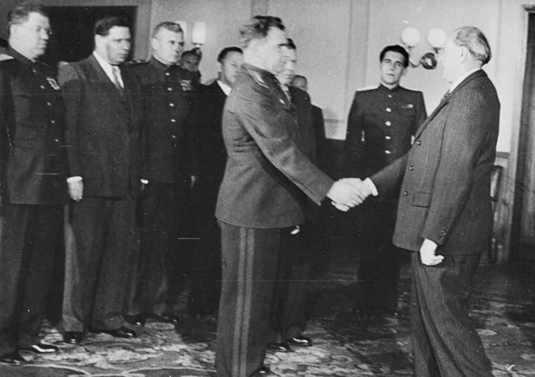Authentic Leaders and the Four Types of Planning
- Maria A. Kithcart

- Nov 10, 2021
- 2 min read

Pictured: Commander Chuikov outside the 62nd Army HQ on the banks of the Volga in Stalingrad, January 1943
When undertaking formal studies in management and leadership, students are presented with instruction on the four types of planning—strategic, tactical, operational, and contingency. Effective leaders and managers understand the four types thoroughly and can assess accurately what is required at each level. In organizations, there are times when the strategy is already set—and managers and leaders devise the supporting tactics, operations, and contingencies to execute the strategy appropriately. Marshal Chuikov is an example of an exceptional authentic leader who could plan all four types effectively. Evidence of his ability to plan for all four types is provided in examples of his leadership from the Great Patriotic War and beyond, as he served as Chief of the Soviet Armed Forces and Deputy Minister of Defense, and later oversaw the Soviet Civil Defense Forces during the 1960’s and early 1970’s.
In Chuikov’s book The Battle for Stalingrad, he includes orders given during those horrific days at the front, which were meticulously drafted at night for the next day (i.e., see p. 151).
Anatoly Merezhko, who served as a communications officer at the 62nd Army HQ, assessed that Lieutenant-General Chuikov was "not a great strategist" in the BBC documentary series "War of the Century" (third episode). However, I do not agree with his remark--in Stalingrad, Chuikov was not required to develop an overall strategy, since it was already set at the highest level (Stavka and the Front Command).
However, specific tactics and operations came under Chuikov's command and were reviewed by the 62nd Army Military Council. Vasily Ivanovich grew to be very familiar with the tactics and operations of the German Army as he was present at the front lines of battle with his warriors. As one can sense, this closeness helped to engender a strong loyalty among his soldiers.
After the surrender of the German 6th Army in Stalingrad, some Red Army commanders were interviewed about their assessment of the strengths and weaknesses of the enemy. An excerpt from Life magazine, 22 February 1943 edition reveals Chuikov’s thoughts on the matter:
“The victory at Stalingrad […] was completed and ready for the history books. The Germans had arrived on Aug. 23. They were surrounded on Nov. 25. They were invited to surrender on Jan. 9 and General (later Field Marshal) Friedrich von [sic] Paulus refused the invitation. Their last airfield, at Gumrak, was taken. The army of Col. General Rokossovsky hammered the remnants against the anvil of Lieut. General Chuikov’s Stalingrad garrison, which had already taken the decisive height of Mamaev Kurgan in the city. The first German generals began to surrender, Moritz von Drebber of the 297th, Dubios of the 44th. […] General Chuikov, [when] asked what were the German’s tactical mistakes at Stalingrad, replied: ‘None. But they made the strategical mistake of putting Hitler in command’”(26).
***Field Marshal Paulus was not a “von” as he hailed from a middle-class family, and was not part of the Prussian aristocracy.



